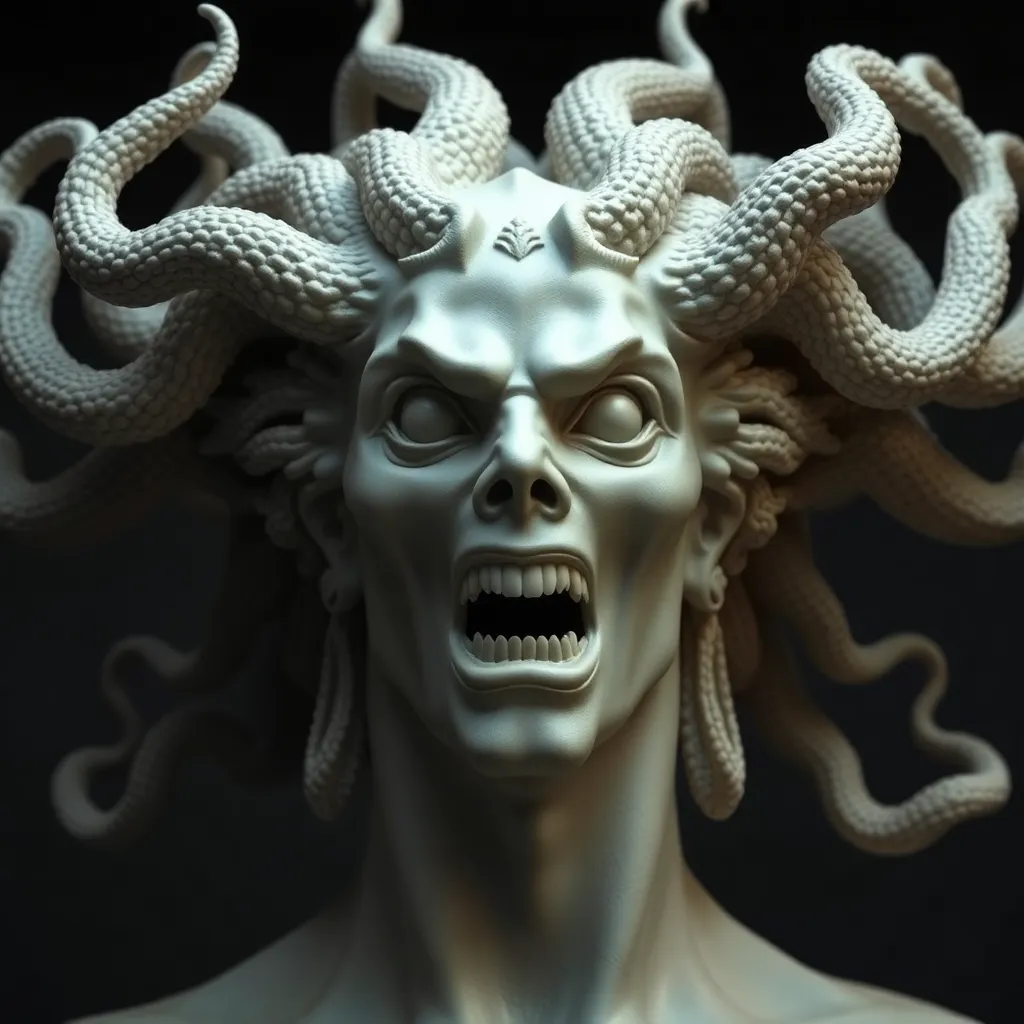The Art of the Gorgon: How Medusa Inspired Artists Throughout History
I. Introduction
Medusa, one of the most infamous figures in Greek mythology, is often depicted as a monstrous woman with snakes for hair, whose gaze could turn anyone to stone. This fearsome Gorgon has captivated the imagination of artists throughout history, serving as a powerful symbol of both terror and beauty.
The significance of Medusa extends far beyond her mythological origins; she has become a potent icon in art and culture, representing themes of power, rage, and transformation. This article aims to explore Medusa’s influence on artists from ancient times to the modern era, shedding light on her enduring legacy.
II. Medusa in Ancient Mythology
Medusa’s origins in Greek mythology tell the story of her transformation from a beautiful maiden into a feared Gorgon. According to legend, she was once a priestess of Athena who was cursed by the goddess for her beauty and vanity, leading to her monstrous form.
Symbolically, Medusa embodies both power and terror. Her ability to petrify onlookers with her gaze reflects the dual nature of femininity, representing both allure and danger. The myth of her curse serves as a cautionary tale about the consequences of hubris and the complexities of female identity.
III. The Renaissance Revival of Medusa
The Renaissance marked a period of renewed interest in classical mythology, with artists seeking to reinterpret ancient stories through a contemporary lens. Medusa emerged as a powerful subject during this time, particularly in the works of artists like Caravaggio.
- Caravaggio’s “Medusa”: This iconic painting captures the moment of Medusa’s death, showcasing both her beauty and horror, and emphasizing the drama of the moment.
- Other Notable Artists: Artists such as Leonardo da Vinci and Botticelli also explored the Medusa myth, often portraying her in ways that highlighted her tragic beauty.
During the Renaissance, Medusa evolved into a symbol of female rage and empowerment, reflecting the changing perspectives on women’s roles in society.
IV. Medusa in Baroque Art
The Baroque period saw dramatic portrayals of Medusa, with artists emphasizing emotion, movement, and the tension between beauty and horror. The works from this era reveal a profound exploration of the human condition.
- Gian Lorenzo Bernini: In his sculpture “Medusa,” Bernini captures the moment of transformation, conveying a sense of dynamic movement and emotional intensity.
- Rembrandt: His interpretations of Medusa focus on the psychological aspects of her character, delving into themes of fear and vulnerability.
This comparison between Bernini and Rembrandt showcases the different interpretations of Medusa, highlighting the richness of Baroque art in expressing complex emotions.
V. The Romantic and Symbolist Movements
As the Romantic and Symbolist movements emerged, artists began to explore deeper emotional and personal interpretations of mythological figures. Medusa became a symbol of the sublime and the grotesque, embodying the tension between beauty and horror.
- Gustave Moreau: Known for his intricate and dreamlike representations, Moreau’s works depict Medusa as a tragic figure, exploring themes of isolation and despair.
- Odilon Redon: His symbolic interpretations highlight the psychological aspects of Medusa, focusing on her inner turmoil and the grotesque beauty of her form.
This shift toward emotional depth allowed Medusa to resonate with the complexities of human experience, making her a compelling subject for artists of this era.
VI. Medusa in Modern and Contemporary Art
In modern contexts, Medusa has been reinterpreted in various ways, often reflecting the changing attitudes toward gender and identity. Feminist perspectives have particularly embraced Medusa as a symbol of female empowerment.
- Louise Bourgeois: The contemporary artist often used the figure of Medusa to address themes of femininity and trauma, positioning her as a powerful figure in the narrative of female identity.
- Other Contemporary Artists: Various artists continue to reinterpret Medusa, using her image to explore issues of gender, power, and the complexities of modern life.
This modern reinterpretation underscores the relevance of Medusa in contemporary discussions about identity and empowerment.
VII. Medusa’s Legacy in Popular Culture
Medusa’s influence extends beyond fine art into literature, film, and fashion, where she remains a compelling figure. Her representation has evolved, often reflecting contemporary societal issues.
- Literature: Medusa appears in various literary works, often symbolizing the struggles of women in patriarchal societies.
- Film: Movies like “Clash of the Titans” and “Percy Jackson & The Olympians” reintroduce Medusa to new audiences, often emphasizing her monstrous qualities.
- Fashion: Medusa’s imagery has inspired designers, with her iconic snakes and fierce beauty appearing in collections and runway shows.
These multifaceted representations of Medusa in contemporary media highlight her continued relevance and the ways in which she resonates with modern audiences.
VIII. Conclusion
Medusa’s enduring impact on artists throughout history is a testament to her complexity as a mythological figure. From ancient mythology to modern reinterpretations, she has served as a symbol of power, rage, and beauty, allowing artists to explore deep emotional and societal themes.
As interpretations of Medusa evolve, they reflect changing cultural attitudes and the importance of mythological figures in understanding art and culture today. Medusa remains a captivating subject, inviting ongoing exploration and reinterpretation in the world of art.




